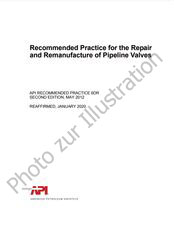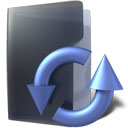Wir benötigen Ihre Einwilligung zur Verwendung der einzelnen Daten, damit Sie unter anderem Informationen zu Ihren Interessen einsehen können. Klicken Sie auf "OK", um Ihre Zustimmung zu erteilen.

API PUBL 4711-ed.2001
Methods for Determining Inputs to Environmental Petroleum Hydrocarbon Mobility and Recovery Models
Name übersetzen
NORM herausgegeben am 1.7.2001
Informationen über die Norm:
Bezeichnung normen: API PUBL 4711-ed.2001
Ausgabedatum normen: 1.7.2001
SKU: NS-1139868
Zahl der Seiten: 72
Gewicht ca.: 216 g (0.48 Pfund)
Land: Amerikanische technische Norm
Kategorie: Technische Normen API
Die Annotation des Normtextes API PUBL 4711-ed.2001 :
API PUBL 4711, 2001 Edition, July 2001 - Methods for Determining Inputs to Environmental Petroleum Hydrocarbon Mobility and Recovery Models
This manual describes methods used to obtain input parameters for models that evaluate the mobility and potential recovery of petroleum liquids in unconsolidated granular porous media. These models are valuable tools for improving system design because, unfortunately, the presence of petroleum liquids in a well is not itself a reliable indicator of the feasibility of free-product recovery or the need to continue recovery operations.
The feasibility and appropriate endpoint for free-product recovery can be addressed by evaluating the mobility of product in the sediment in which it is encountered. If the mobility of product is high, there is a potential for future adverse product migration. In addition, it is likely that properly designed recovery systems can effectively deplete a significant fraction of the mobile product. Conversely, if the mobility of the product is low, the risk associated with future migration is low, and efforts to deplete mobile product will be ineffective.
The intent of this document is to provide a reference for parties needing methods for determining inputs to product mobility, and volume models. The need for such data (in particular at large sites such as refineries) has increased dramatically in recent years. In large part this has been driven by broader use of multiphase flow models (e.g., Parker et al., 1994) and spreadsheet tools for analysis of product mobility (e.g., Charbeneau et al., 1999). Secondarily, it is recognized that for small sites the resources needed to conduct site specific mobility investigations may not be available. As such, it would be useful to generate a data base of study results (obtained using consistent methods) that can be used at these sites.
Standardization of methods is the ideal; unfortunately, it may not be possible in all cases. A number of factors frustrate rigid standardization. First, significant differences exist between sites. A direct consequence is that the best methods for many analyses are different for different sites. Secondly, only a few specialized laboratories conduct a number of the analyses (e.g., capillary pressure vs. saturation and relative permeability vs. saturation). The equipment and methods used by these laboratories are highly specialized and frequently different. As such, it may not be possible to have all sites conduct measurements using a single method. Reflecting these challenges, this document provides options as opposed to rigid standards.
The first section introduces nomenclature and parameters of concern. Individuals familiar with multiphase flow in porous media can skip this section. The second section addresses determination of fluid properties. The third section describes methods for analysis of porous media properties at a laboratory (column) scale. The fourth section addresses measurement of porous media properties at a field scale. Lastly, suggestions for reporting results are presented.
Throughout this document practices are described that involve the handling of potentially hazardous materials. This document does not address health, safety, and regulatory compliance issues. It is the responsibility of the user of this document to establish appropriate health and safety practices and to comply with relevant regulations.
Empfehlungen:
Aktualisierung der technischen Normen
Wollen Sie sich sicher sein, dass Sie nur die gültigen technischen Normen verwenden?
Wir bieten Ihnen eine Lösung, die Ihnen eine Monatsübersicht über die Aktualität der von Ihnen angewandten Normen sicher stellt.
Brauchen Sie mehr Informationen? Sehen Sie sich diese Seite an.



 Cookies
Cookies
